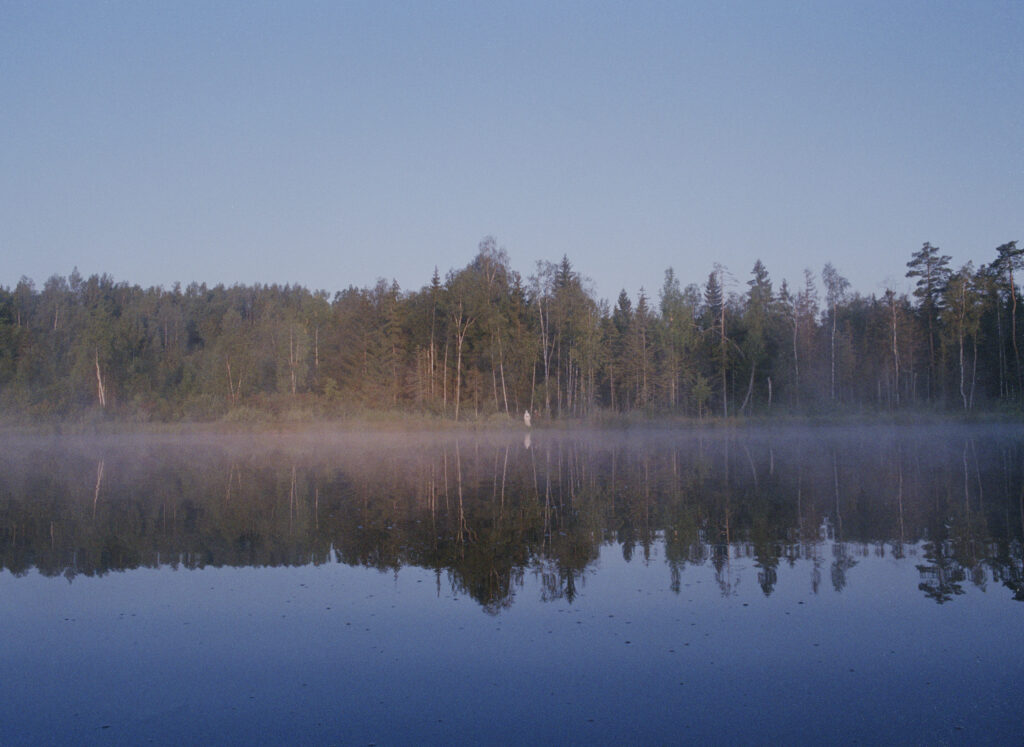
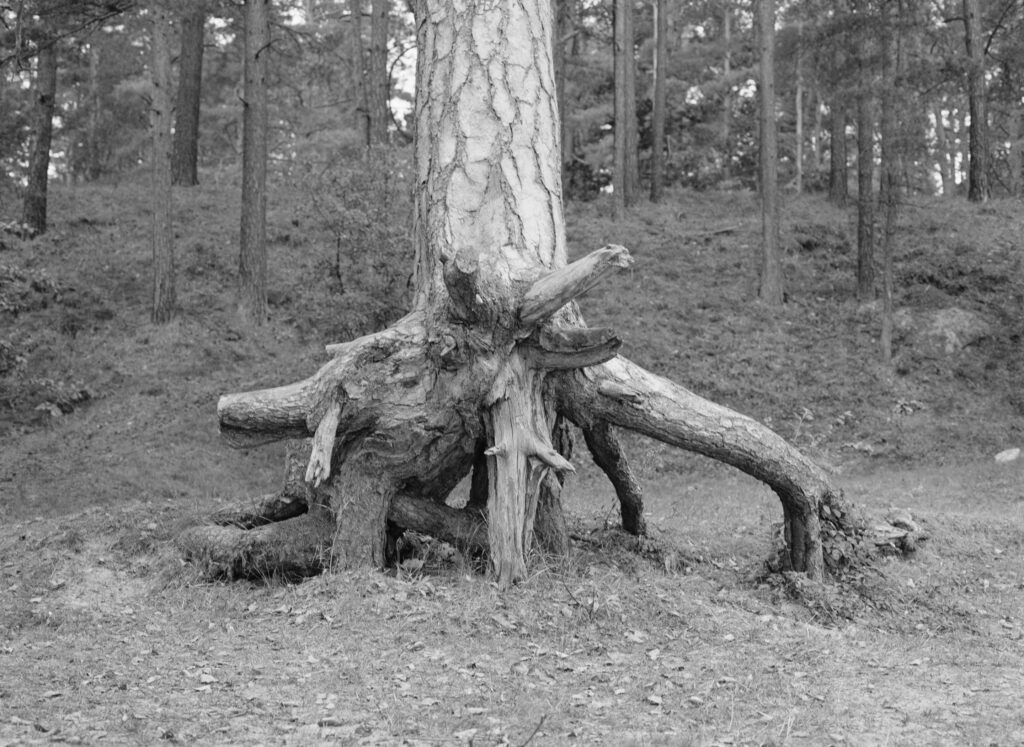

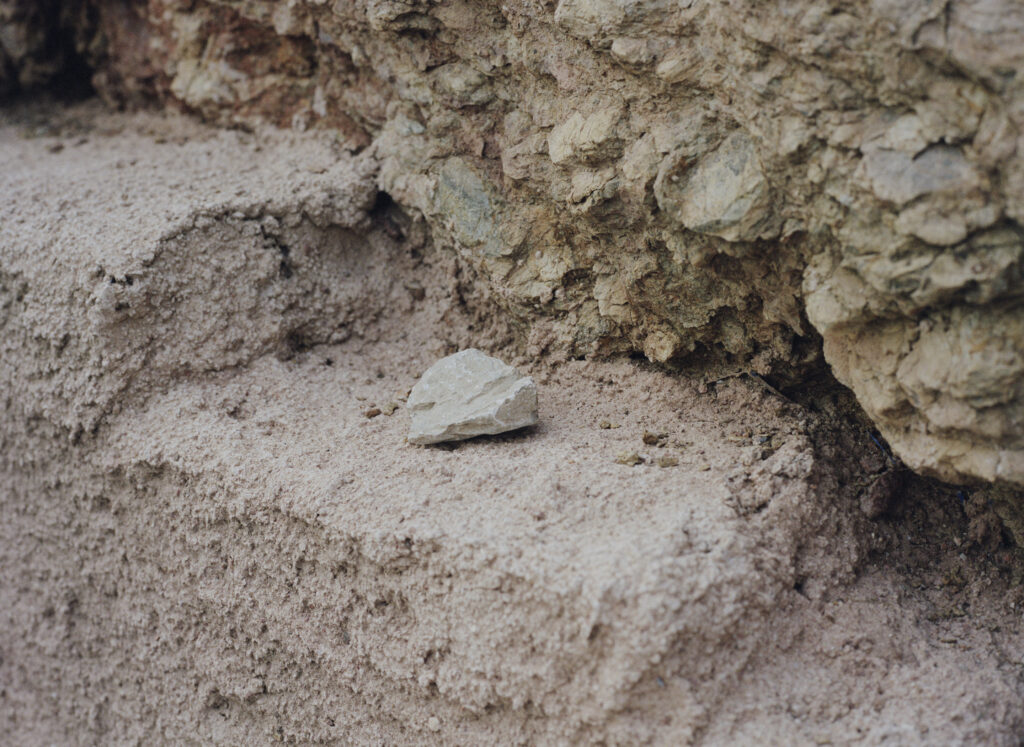
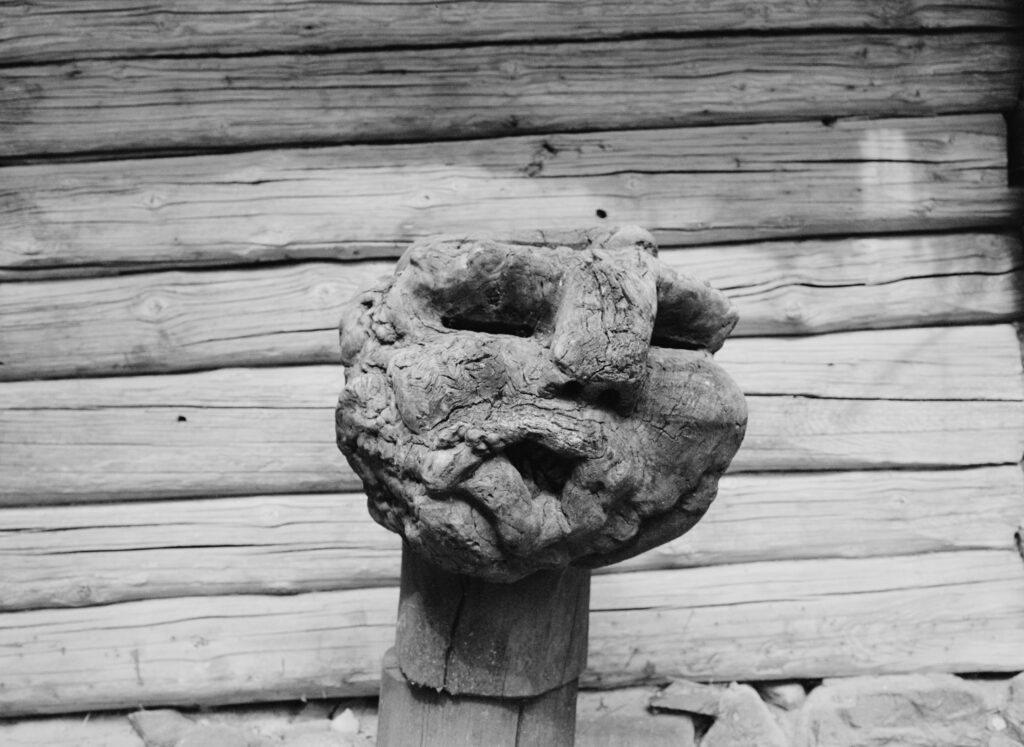
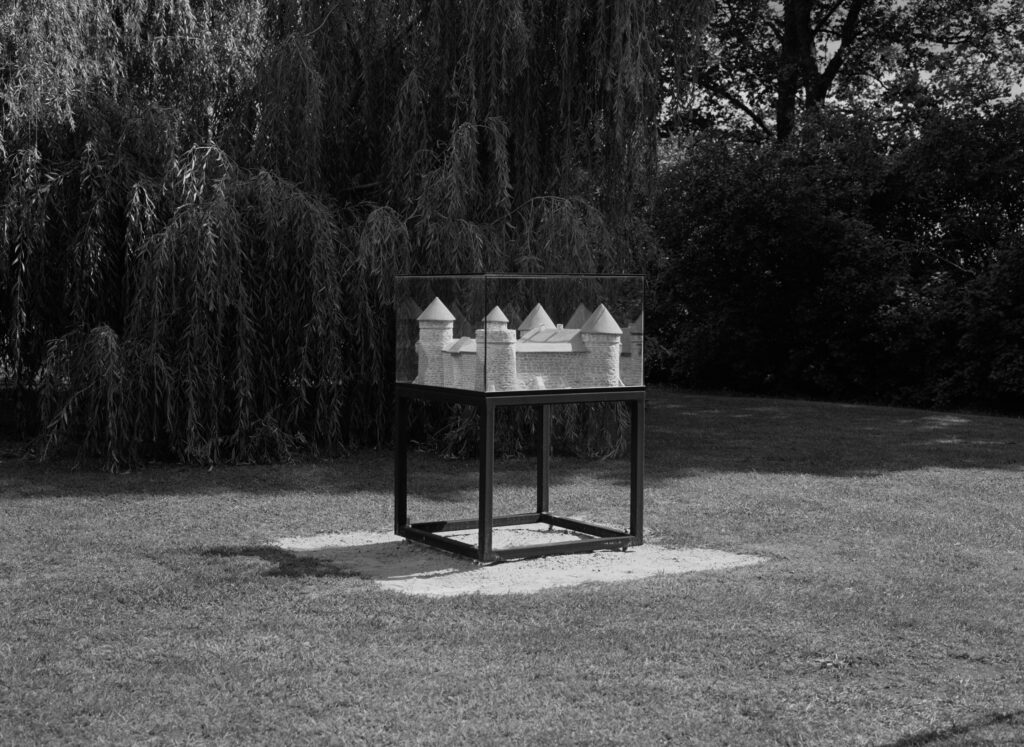
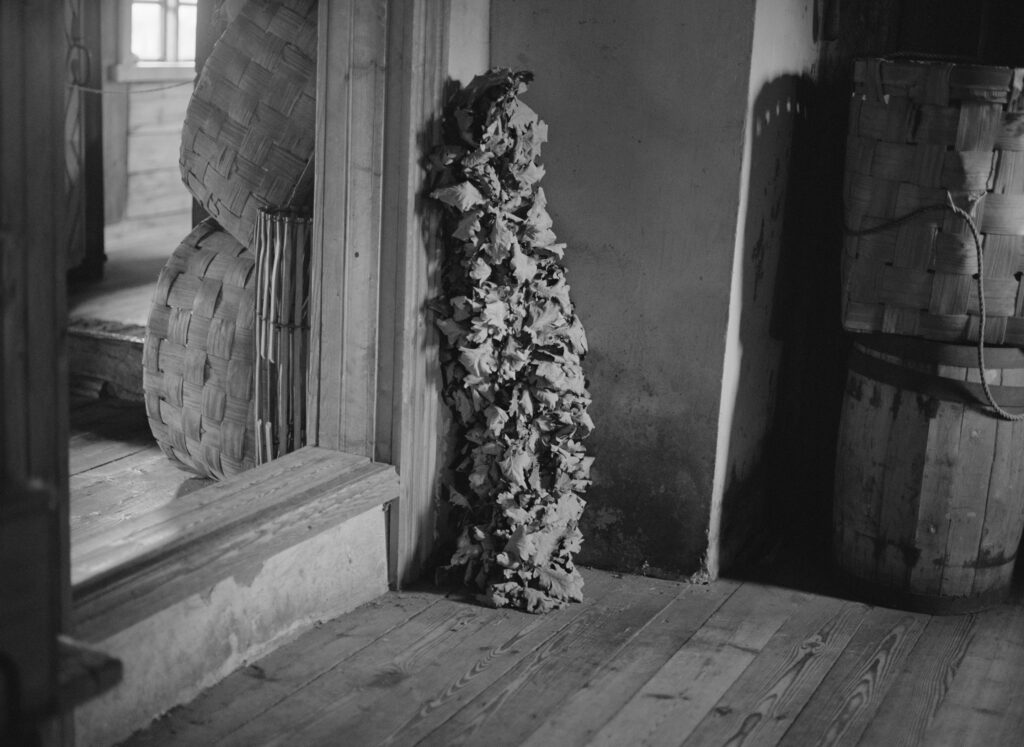
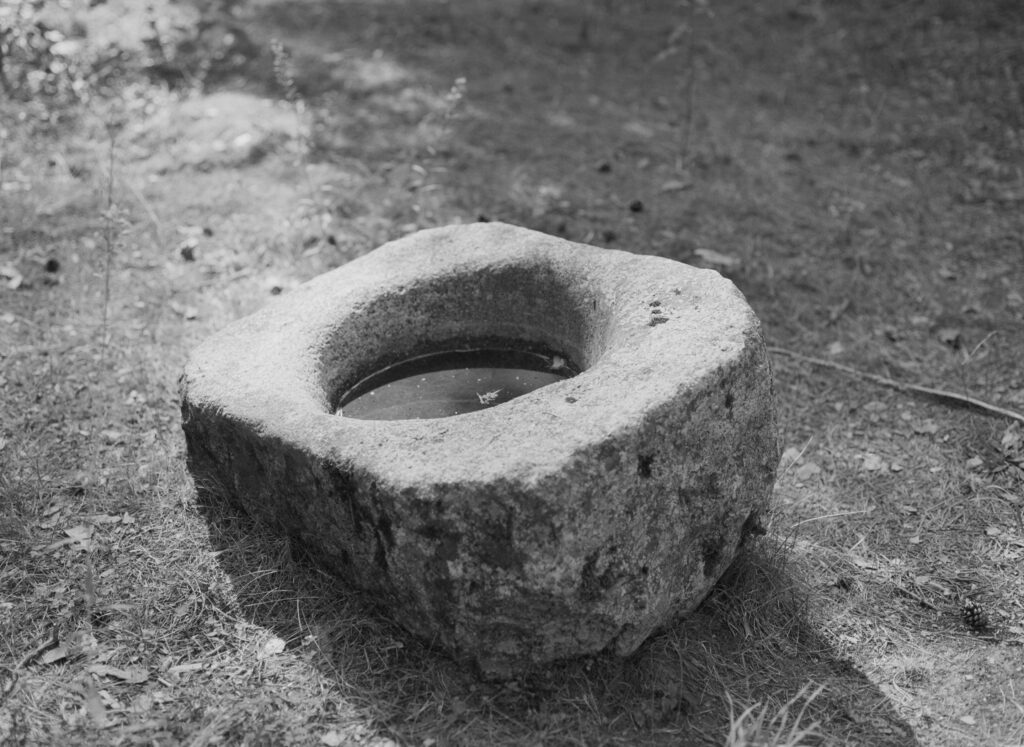
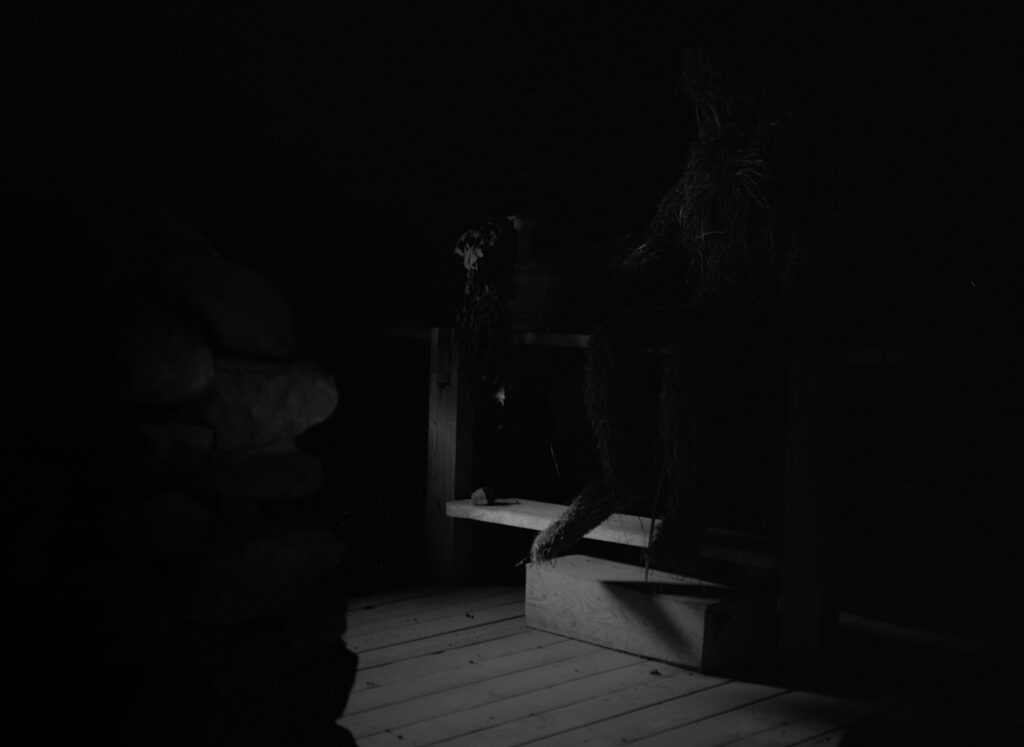
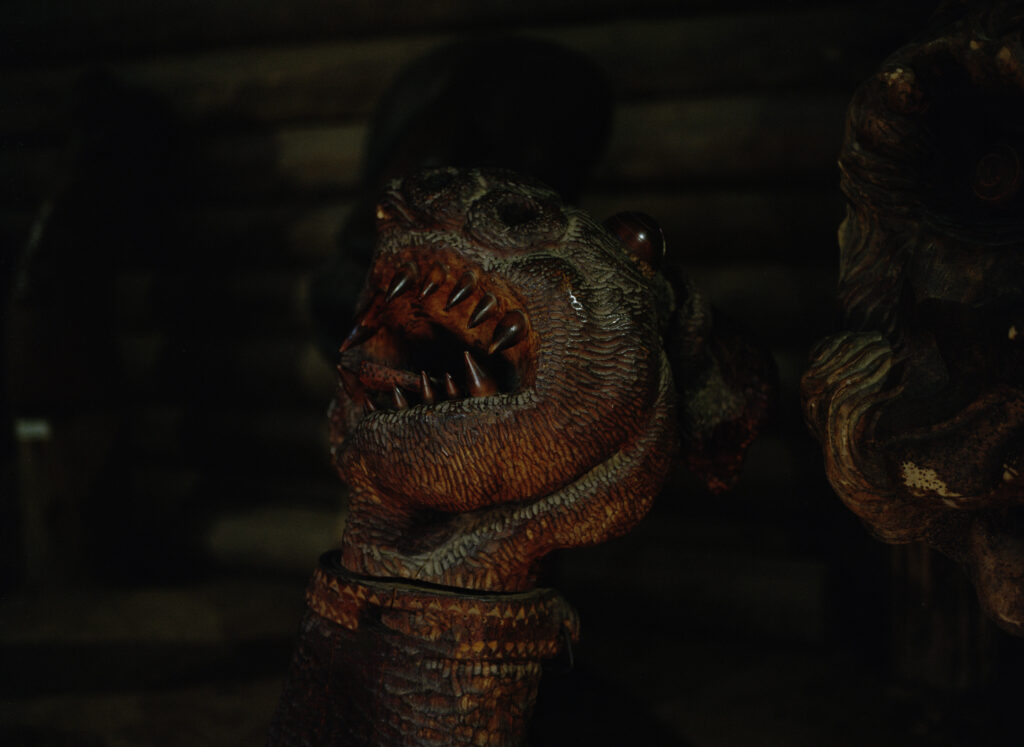
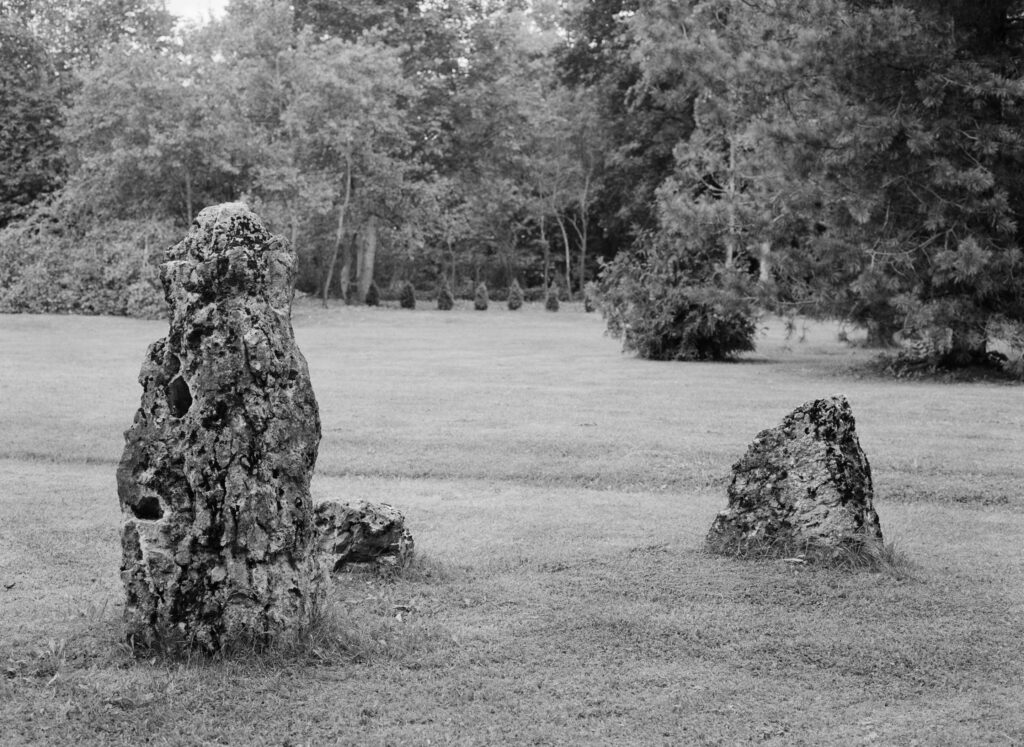
Constantly searching for something else
That which I am saying now is not said by me,
But dug out of the earth like grains of fossilized wheat.
On their coins depict a lion,
Others a head.
Multifarious copper, gold, and bronze lozenges
With identical honour lie in the earth.
The age, trying to bite through them,
Has printed on them its teeth.
Time clips me like a coin,
And there’s no longer enough of me for myself
–Osip Mandelstam

Last summer I was on an artistic residency for some weeks, making work that was inspired by a folklore archive I stumbled across in the city’s national library. Some other artists and I were invited to spend a weekend in the countryside, around three hours outside of the city centre. I was excited to get out of the routine I had fallen into since I’d arrived, and to have a few days away from the studio. The cottage we rented was owned by a couple in their seventies, recently retired after having worked as forest rangers for almost their whole life. When we arrived they showed us around their grounds, which spanned for miles around the forest that surrounded us. They had dedicated their life to the forest and had started to pick up some old rituals to connect with the spirits they believed were around us. On the second day, the women took me to a massive rock by the edge of the forest. She told me that she had stumbled upon it one day when she was out for a walk, and when she found it only a small piece of the top of it was sticking out of the ground. 

The day after, we had a walk around the forest to collect branches for one of her sauna rituals. We passed by a smaller rock and she told me to sit on it. She said, “Sit there,” and pointed at the smallish rock, “Sit there for 10 minutes and I will be back to get you after I have finished up some preparations for the sauna ritual.” So, I did. It was quite pleasant. It was summer, the sun was out. I could hear her goats in the distance. The stone was a bit cold. The mosquitos weren’t too bad, I had for once not forgotten to spray myself with mosquito repellent that morning. I can’t explain why, but I started to feel a bit uneasy. I got up from the stone and felt better as soon as I took a few steps away from it. The woman came back and I wanted to tell her about the interaction, but she said no, it’s between you and the rock.
In that moment, I started to think of when I was climbing a mountain a couple of years earlier. 

These conflicted feelings are a constant companion to me while I´m making the work I do. I can’t always separate if it’s me that is mirroring my own consciousness and feelings upon the objects and material I’m working with or the agency of the object itself. My meeting with the woman that summer didn’t make things clearer. After that, I started to wonder if I could unmap and unthink the way I interact with my surroundings, and change the way I use language to formulate the unexplainable. I started to wonder how deeply integrated the colonialist view of animism is in us? We can register it in our everyday perception, maybe sometimes in ways that are not immediately perceptible, because it has become a natural part of how we perceive, experience and relate to things. We as modern subjects see ourselves as the active figure facing a passive world of matter that is acted upon. Are we able to step outside and transform what presents itself to us as “given” reality?[i]

The traditional philosophical Western view of the soul is that it´s something that is owned by a subject, that the essence is enclosed within its interior. We can understand the confusion, looking back in history, of the anatomists who opened up the body to look for the soul, only to discover that they couldn’t find it. The writer Anselm Franke in his article Animism: Notes on an Exhibition; asks the question; `What if the soul is not a substance, not a “thing” but a function (not unlike the “zero” in mathematics)? What if “soul” (anima in Latin) is another name for the very medium that makes reciprocal exchange possible, for what happens in the very in-between, the event of communication? Would that not also change the very meaning of what it means to animate?´[ii]

The physicist Karen Barad in her text Posthumanist Performativity: Toward an Understanding of How Matter Comes to Matter poses the question “Why are language and culture granted their own agency and historicity while matter is figured as passive and immutable, or at best inherits a potential for change derivatively from language and culture? How did language come to be more trustworthy than matter?” [iii]
Maybe it has to do with the way in which we comprehend the concept of materiality, such as how it´s appropriated and involved in human projects within specific social and historical contexts. 

For instance, when things enter a museum, they become subject to de-animation, as they turn from things into objects of the very conservation that is the purpose of the museum’s existence. ”They become positioned within a classificatory order of knowledge where the object here is fixed and identified. So, whatever way an object might have been animated in its original context, ceases to be so in the confines of a museum. On the other hand, by distinguishing what is inherent to the object from what belongs to the knowing subject and what has been projected onto the object, we understand the world through this objectification.”[vii] 
In her essay, The Uprising of Things, professor Vivian Liska writes that “in order to justify our transience and console ourselves about our mortality we insist of the lifelessness of things. That we take out our revenge on their permanence by making them subservient, by weaving them into our activities. That by naming things we assign them a role and make them submissive. Words are human ́s tools of mastery”. [viii] Death is the price we pay for being alive.

References:
[i] Franke, Anselm, Animism, Notes on an Exhibition, [Online Article]. 2012 https://www.eflux.
com/journal/36/61258/animism-notes-on-an-exhibition/ (accessed 2020-04-12).
[ii] Franke, Anselm, Animism, Notes on an Exhibition, [Online Article]. 2012 https://www.eflux.
com/journal/36/61258/animism-notes-on-an-exhibition/ (accessed 2020-04-12).
[iii] Barad, Karen. Posthumanist Performativity: Toward an Understanding of How Matter Comes to Matter. Signs 28.3 (2003): 801-31. Web. pp. 801.
[iv]Heidegger, Martin. Poetry, language, thought, 1971. New York. Harper and row. pp.74
[v] Ingold, Tim. Being Alive to a world without objects. The Handbook of Contemporary Animism (New York: Routledge). 2013. pp. 213-225pp.220
[vi] Bornemark, Jonna. De Omätbaras Renässans, en uppgörelse med pedanternas världsherravälde. 2018
[vii] Franke, Anselm, Animism Volume 1. Sternberg Press, 2010. pp 15.
[viii] Liska, Vivian. The Uprising of Things, Animism Volume 1. 2010. pp. 132
[ix] Liska, Vivian. The Uprising of Things, Animism Volume 1. 2010. pp. 132